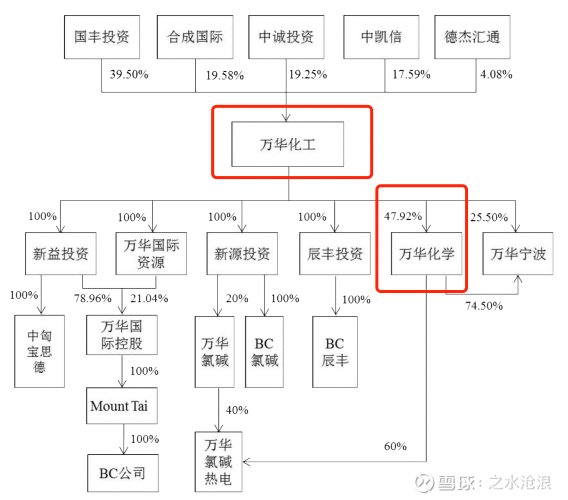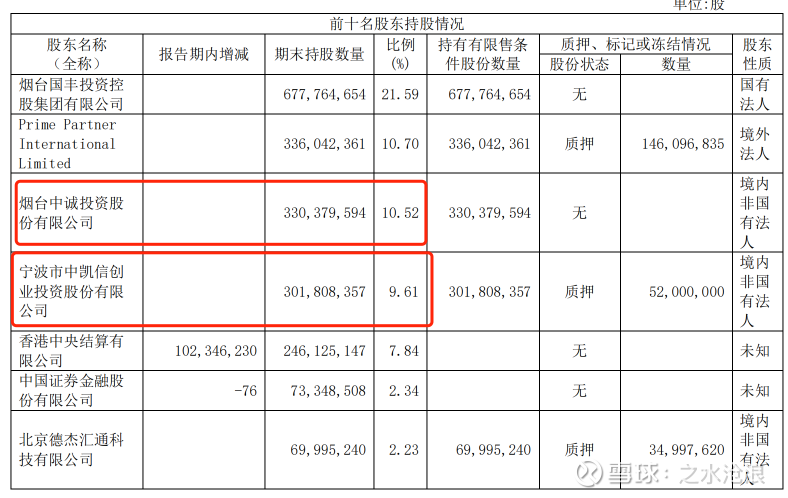In the process of looking at Wanhua’s financial reports over the years, I have always had a question. The management of such an excellent company as Wanhua does not hold shares, which is against common sense.
Most of the good companies are owned by management. Only in this way can the personal interests of management be tied to the interests of the company. The company has a greater momentum to move forward.
When Wanhua’s annual report introduces the management, the style of painting is like this:

The above is the 2017 annual report, which has been like this since its listing in 2001. Management does not hold shares.
Until I saw the 2018 annual report, Wanhua Chemical acquired Wanhua Chemical. It dawned on me that I was waiting here.

From the perspective of equity structure, Wanhua Chemical is the parent company of Wanhua Chemical, owning 47.92% of the shares.
You can understand that the subsidiary ate up the head office.
After eating, the head office was cancelled.
How is that eaten?
Wanhua Chemical has 5 shareholders, namely: Guofeng Investment, Synthetic International, Zhongcheng Investment, Zhongkaixin, and Dejie Huitong.
Wanhua Chemical issued new shares to these five companies, and these five companies changed from direct shareholders of Wanhua Chemical to direct shareholders of Wanhua Chemical.
Specifically: issued 677,764,654 shares to Guofeng Investment, issued 336,042,361 shares to Synthetic International, issued 330,379,594 shares to Zhongcheng Investment, issued 301,808,357 shares to Zhongkaixin, issued 69,995,240 shares to Dejie Huitong, issued a total of 1,715,990,206 shares, and cancelled ten thousand shares at the same time. 1,310,256,380 shares originally held by China Chemical.
In the 2021 annual report, Wanhua’s shareholder structure is as follows:

These two companies account for about 20% of Wanhua Chemical’s shares.

Ding Jiansheng is the old chairman of Wanhua, and Wanhua became a giant in his hands.

As you can see here, Wanhua has two employee stock ownership platforms: Zhongcheng Investment is an employee stock ownership platform, and Zhongkaixin is a management stock ownership platform.
The two platforms have subscribed for a total of 1 billion yuan. Today Wanhua’s market value is about 300 billion. 20% of the shares have a market value of 60 billion. 60 times over.
in conclusion:
1. Wanhua Chemical completed the management’s shareholding in 2018 through the acquisition of the parent company by a subsidiary. (It’s called mixing.) This mixed reform model is considered to be very successful.
2. I personally think this is very successful. The company transfers part of its equity to its employees, tying the personal interests of the employees with the company’s interests. Only such a company can work hard, be cohesive, and be able to fight tough battles. Wanhua’s success today is inseparable from mixed-ownership reform (including previous expectations for mixed-ownership reform).
3. It is a little regrettable that the date of mixed reform is too late, it would be better if it could be implemented earlier.
This topic has 7 discussions in Snowball, click to view.
Snowball is an investor’s social network, and smart investors are here.
Click to download Snowball mobile client http://xueqiu.com/xz ]]>
This article is reproduced from: http://xueqiu.com/8063671917/232789976
This site is for inclusion only, and the copyright belongs to the original author.